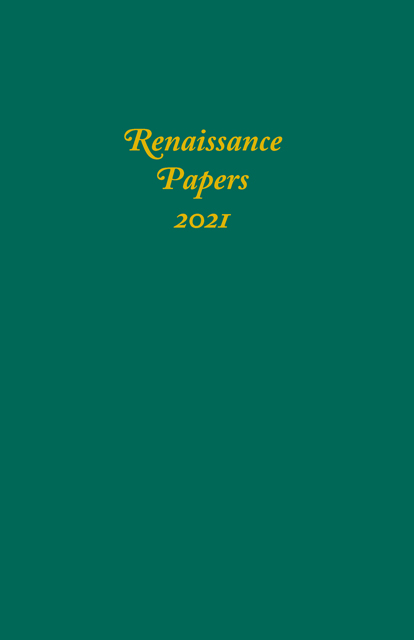Book contents
- Frontmatter
- Contents
- Dedication
- “Strange Serious Wantoning”: Early Modern Chess Manuals and the Ethics of Virtuous Subterfuge
- “Both Use and Art”: Motifs and Method in Astrophil and Stella
- Embodied Love(rs): Injury and Comedy in Mary Wroth’s Urania
- Edmund Spenser’s Automaton Alchemy: The Case of False Florimell
- Who Edited the 1571 Mirror for Magistrates?
- Statues Living and Conscious: Hermetic Statue-Magic in The Winter’s Tale
- Transmutation and Refinement: The Metaphysics of Conversion and Alchemy in Renaissance Spain
- The Twelve Inka and the Twelve Caesars: Reflections on an Early Modern Visual Theme in the Art of Colonial Peru
- Linguistics and Epistemology in Thomas Harriot’s North Atlantic World
- Assembling the King’s Body: Examining Holbein’s Portrait Techniques and the Fashioning of Henry VIII’s Image in the English Renaissance
- Molière’s L’École des Femmes between Shame and Guilt
“Both Use and Art”: Motifs and Method in Astrophil and Stella
Published online by Cambridge University Press: 17 December 2022
- Frontmatter
- Contents
- Dedication
- “Strange Serious Wantoning”: Early Modern Chess Manuals and the Ethics of Virtuous Subterfuge
- “Both Use and Art”: Motifs and Method in Astrophil and Stella
- Embodied Love(rs): Injury and Comedy in Mary Wroth’s Urania
- Edmund Spenser’s Automaton Alchemy: The Case of False Florimell
- Who Edited the 1571 Mirror for Magistrates?
- Statues Living and Conscious: Hermetic Statue-Magic in The Winter’s Tale
- Transmutation and Refinement: The Metaphysics of Conversion and Alchemy in Renaissance Spain
- The Twelve Inka and the Twelve Caesars: Reflections on an Early Modern Visual Theme in the Art of Colonial Peru
- Linguistics and Epistemology in Thomas Harriot’s North Atlantic World
- Assembling the King’s Body: Examining Holbein’s Portrait Techniques and the Fashioning of Henry VIII’s Image in the English Renaissance
- Molière’s L’École des Femmes between Shame and Guilt
Summary
In a moment of exasperation, the central character in Tom Stoppard’s Jumpers exclaims, “How the hell do I know what I find incredible? Credibility is an expanding field… . Sheer disbelief hardly registers on the face before the head is nodding with all the wisdom of instant hindsight.” I imagine that when Dante Gabriel Rossetti coined the term “sonnet sequence” in 1881 (OED C2), heads began to nod with the “wisdom of instant hindsight.” Sonnet sequences: oh yes, everyone knows what they are. The thing itself was, however, something of a novelty in its day. When Thomas Newman published his unauthorized quarto in 1591, what were readers to make of such a collection, one fourteen-line poem after another, marching off into the distance, 107 of them? What, if anything, might provide an orientation, a sense of structure and method?
Two streams of influence flowed together to shape Astrophil and Stella. The obvious one to us today was that of Petrarch, his Italian and French imitators, and certain poems by Wyatt and Surrey. Two years after Newman’s quarto appeared, Raleigh was able to call Sidney the “Scipio, Cicero, and Petrarch of our time,” but only because Sidney himself had given the Petrarchan model a huge injection of energy, a substance and liveliness beyond anything it had had in England before.
The other stream, much more prominent in Elizabethan culture, was that of the miscellanies, beginning with Tottel in 1557 and continuing with that series of wonderful titles, The Paradise of Dainty Devices, the Gorgeous Gallery of Gallant Inventions, the Handful of Pleasant Delights. A reader who leafed through one of these would find a series of unattributed poems with titles, of different lengths, stanza forms, and subject matter. Indeed, this important aspect of these collections might be announced on the title page, as it was in the case of The Forrest of Fancy, 1579:
Wherein is conteined very prety Apothegmes, and pleasaunt histories, both in meeter and prose, Songes, Sonets, Epigrams and Epistles, of diuerse matter and in diuerse manner. With sundry other deuises, no lesse pithye then pleasaunt and profytable.
- Type
- Chapter
- Information
- Renaissance Papers 2021 , pp. 13 - 24Publisher: Boydell & BrewerPrint publication year: 2022



